Rules and subtleties of choosing pipes for a fence
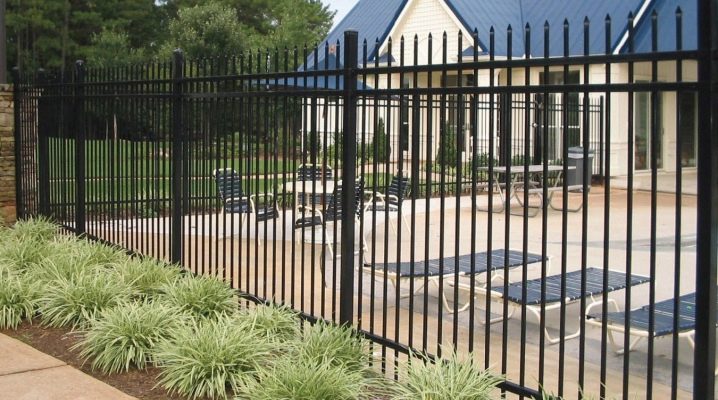
The arrangement of any private site involves the construction of fences. These structures are made from various materials, among which special attention should be paid to metal pipes. The products are lightweight and practical, which allows for installation even independently. When buying, it is important to consider the rules and subtleties of choosing pipes for the fence. This will allow you to create not only durable, but also beautiful designs that fit into a specific exterior.
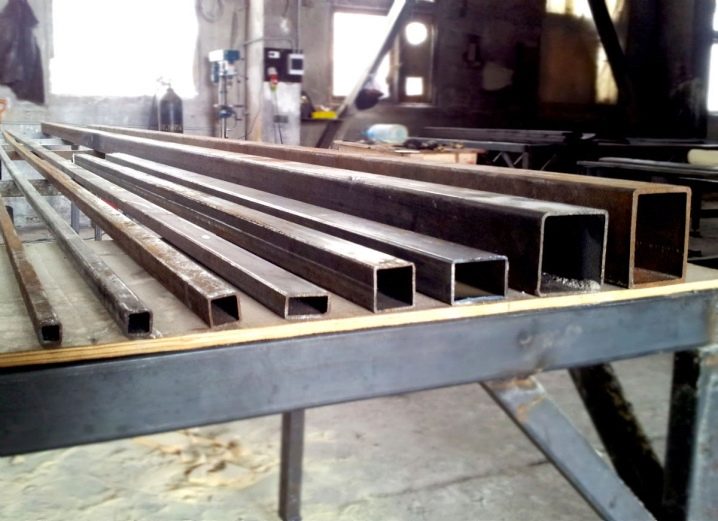
Peculiarities
The pipe is one of the most demanded materials in the construction of fences, balconies, terraces of a country house. It can be used by both the main and the auxiliary element. Very often, support posts are made from this raw material. For such purposes, several materials are used:
- Metallic pipes. A basic product that is very easy to work with. The material bends perfectly, which allows you to give the structure various shapes and sizes.
- Asbestos pipes. This raw material is distinguished by its durability, but at the same time it is rather fragile, which does not always allow its use with other substances. Fences made of asbestos-cement pipes are most often found in industrial plants.
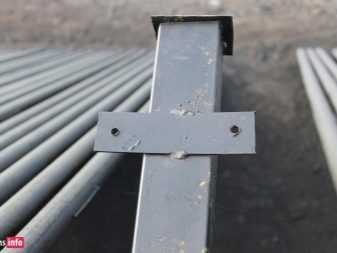
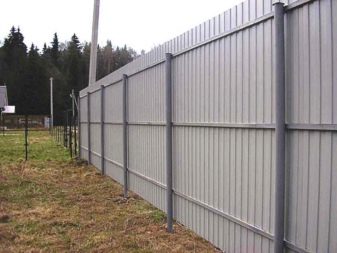
Some professionals can complement fences Pvc pipes. But this product is not the main one, as it is intended for solving completely different problems.
The design of a pipe fence is practically no different from systems made of other substances. There are also support pillars, between which the decorative layer is located.
It can be formed both from the same pipes and from other building materials.
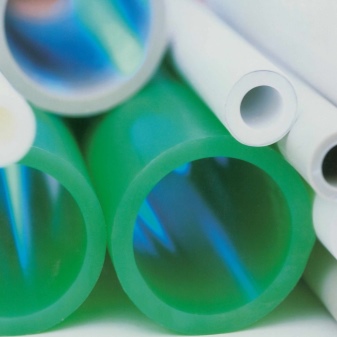
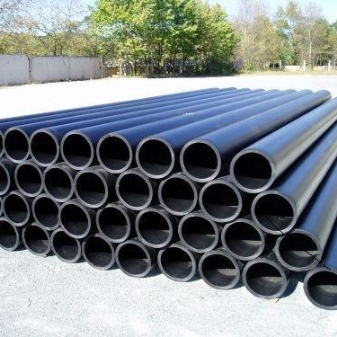
Fences of this type have several significant advantages:
- Durability and strength. The metal frame can withstand significant loads, and with proper care it does not corrode. Structures resist well external physical stress, which is much better than wood.
- The pipes can be installed in spans of any length. This is important, as it allows you to build not only strong, but also beautiful structures around the entire perimeter of the territory.
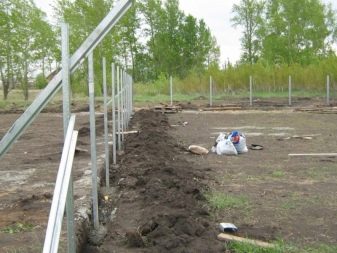
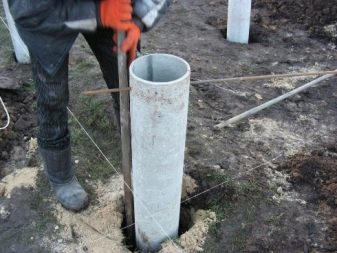
- Fences are easy to restore by simply replacing a broken piece or welding an extra piece of steel.
- The products are perfectly combined with other materials. Therefore, pipes are very often supplemented with a metal profile, stone, forging and other structures. Sometimes fences are formed from only one pipe, giving them different geometry.
One of the disadvantages of a pipe fence is that the material does not cover the area. If you need to protect the area from prying eyes, you will have to sheathe the metal with a profile or polycarbonate sheets. This, in turn, can already affect the decorative appearance of the surface.
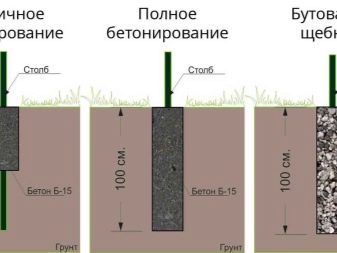
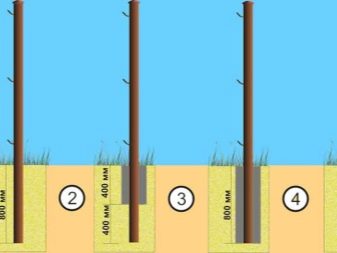
Types and materials
Fences in most cases are made of a metal pipe, which has a certain margin of safety. Conventionally, these structures can be divided into several types:
- Sectional fences. This design consists of several sections that are manufactured in factories. Their installation involves the installation of a supporting profile pipe and hanging the partition from it. This option is not always convenient, since it does not differ in beauty and originality. But all modules are protected with high quality, which makes it possible to extend the service life of the metal several times.It is rather difficult and time-consuming to carry out such welding work at home.
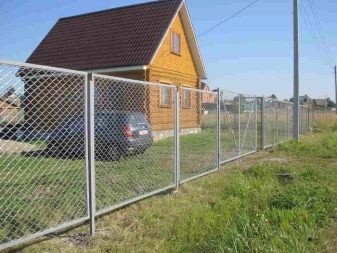
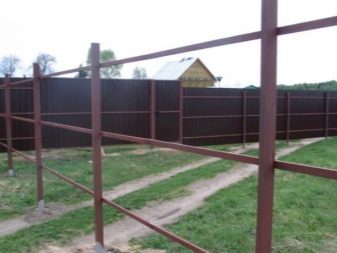
- Welded fences. They are received directly at the construction site. To do this, a frame is welded from the profile, to which decorative elements are then attached. Structures of this type are much more reliable than the previous version. But at the same time, they require more careful processing with protective compounds in order to exclude the rapid formation of corrosion.
Depending on the cross-section of the pipe, there are several types of materials for fences:
- Square. Profiled pipes are durable, but not always practical. The squares fit well together, which makes this type especially popular.
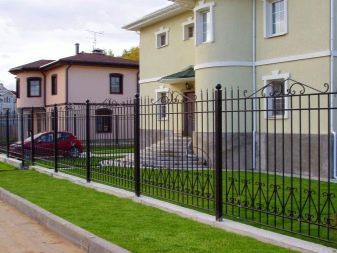
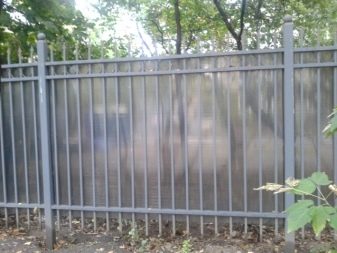
- Rectangular. Pipes of this type are the most popular in the construction of fences. Metal-profile structures are distinguished by an optimal ratio of strength and cost.
- Round. If we take into account the strength characteristics, then such products are the most durable and reliable. They can withstand loads that the profile structure cannot bear. Screw supports are very often made of such pipes, complemented by special threads. This structure allows the screw to be screwed into the ground without using concreting for fixing.
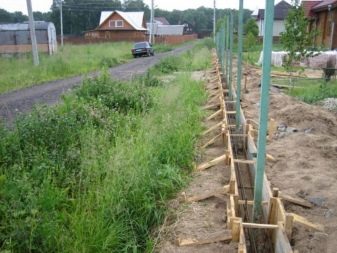
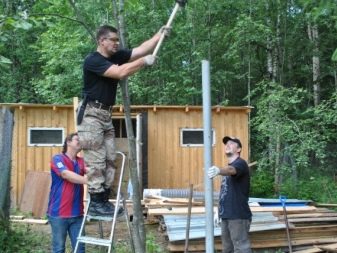
The use of plastic structures is rare, since the material is not particularly strong and cannot withstand high loads.
In the manufacture of pipe fences, several auxiliary materials can also be used:
- Corrugated board... The sheets fit perfectly with the profile structures. Their installation is relatively easy and quick. Therefore, this combination is very common.
- Wood. With the help of wood, they simply decorate the frames. Both vertical pickets and longitudinal decorative boards can be attached to the pipe.
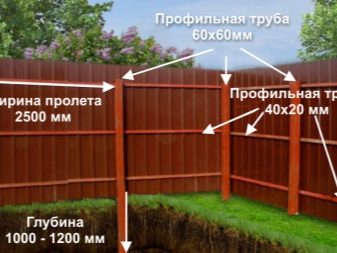
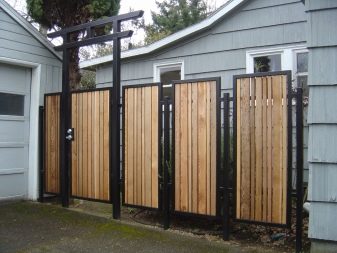
- Metal grid. This product is used to create simple and practical fences. To connect these materials, both spot welding and special self-tapping screws can be used. Such structures are often prefabricated, as they are manufactured in factories.
- Forged Products... Pipe structures are very often decorated with forging, which gives them originality. It uses curved fittings and decorative elements in the form of flowers. Such materials require good welding skills, so it is best to rely on experienced professionals.
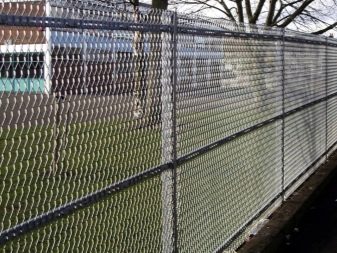
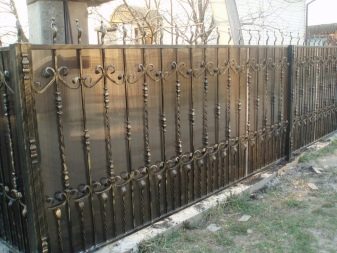
What pipe sizes should you choose?
Fences of any type lend themselves to significant loads, which the frame must withstand. Therefore, when a professional pipe is selected, it is important to take this factor into account. You can determine the optimal dimensions of structural elements by following simple recommendations:
- The section of the pipe depends on the height of the fence itself. With a fence height of 1.8-2.2 m, it is better to use profile products with a section of 8x8 cm.If you decide to use round elements as a rack, then the best indicator will be a diameter of 6 cm.For small fences, the cross-section of pipes can be from 40x40 mm to 40x50 mm ... It should be understood that a thin frame will not be able to withstand heavy finishes and strong winds.

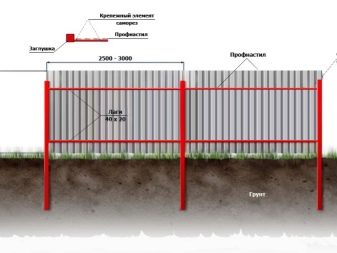
- To obtain a solid system, elements with a wall thickness of at least 3 mm should be used. This value increases in proportion to the load on the fence.
- If the support posts will be buried in the ground without a concrete foundation, then it is advisable to dig them in to a depth of 0.8-1.2 m, depending on the density and structure of the soil. The softer it is, the deeper the metal should be placed in order to provide optimal resistance to wind loads. This characteristic is important to take into account when selecting the length of the workpiece for the support legs.
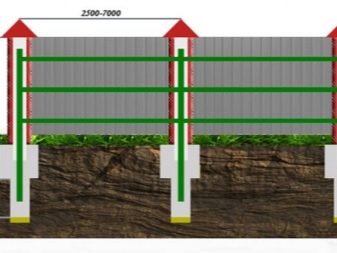
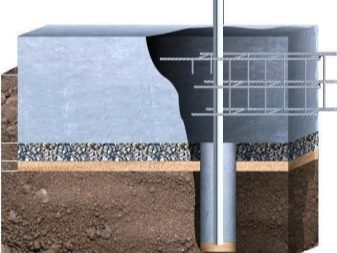
- The cross-section of the longitudinal lags is slightly less than the indicator for the support pillars. Often a 40x20 or 40x25 mm pipe is needed for a classic fence. It is advisable to increase this parameter only when the distance between the supports exceeds 2.5 - 3 m.
- When it is planned to install a gate along with a fence, then thick structures should be used for such purposes. The section for the support under the gate must be at least 10x10 cm, and the thickness must exceed 4 mm. But it is best to replace them with solid metal blanks, which will last much longer. It should be understood that a round pipe is much better suited to solving such problems. Therefore, it is precisely it that is used in the construction of the gate.
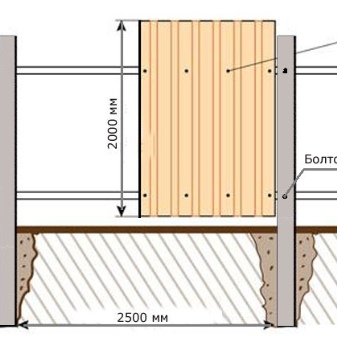
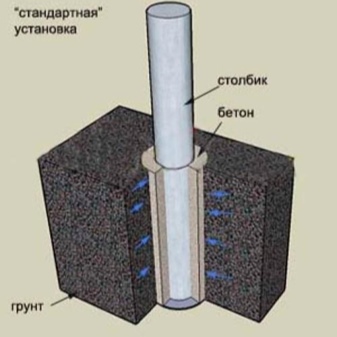
It is undesirable to make fences from polypropylene pipes. The material does not weld well and is not able to withstand temperature extremes and high loads.
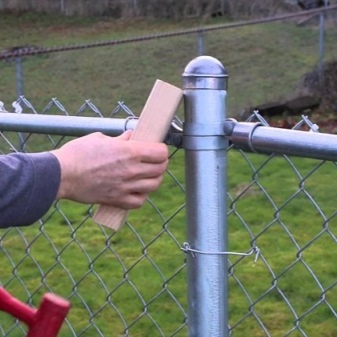

Features of installing the fence frame
Installing a metal fence is a relatively simple process requiring only experience with welding and other locksmith tools. The construction of a frame of this type can be broken down into several sequential steps:
- Design and selection of materials. Externally, frames for fences are rectangles, which are constructed from several profiled pipes. To calculate the amount of materials, you should take measurements of the perimeter where the fence will be located. After that, you decide on the dimensions of the canvases, and based on these data, you can find out the required amount of products. It is also important to take into account the cross-section of each attribute here, which will allow you to select the required amount of profiled pipe.
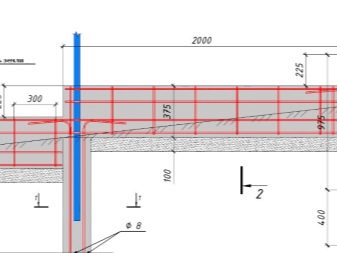
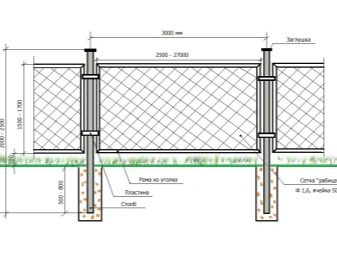
- Perimeter markings... This process involves the formation of straight lines along which the fence will be located. To do this, you can use several pegs and a thread. It is important to note where the posts will be installed in the future. It is advisable to take into account their thickness in order to cut even horizontal bridges in the future.
- Digging holes for posts... Their manufacture can be carried out with special hole drills, which will exclude the use of a shovel. If the fence is short, you can form a small foundation for it. This minimizes the risk of contamination of the decorative layer during rain, and also strengthens the entire structure. For this method, you should already dig a small trench along the entire perimeter.
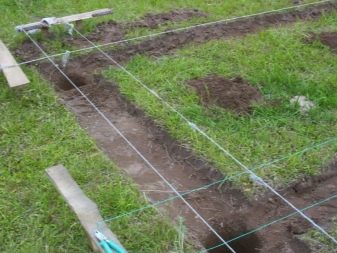
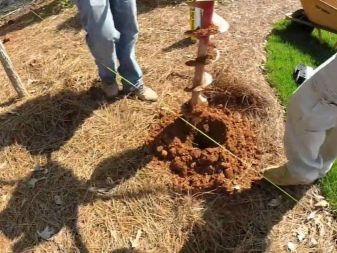
- Installation of pillars... This process involves strengthening the support in the pit. The simplest option is to fill the structure with concrete. If you are not able to complete it, then you can simply compact the post with rubble and sand. It is important to place the support strictly vertically so that it does not move. In the case of using concrete, it is advisable to install additional spacers that will not allow the metal to deviate from the vertical. After the mixture hardens, these elements are removed.
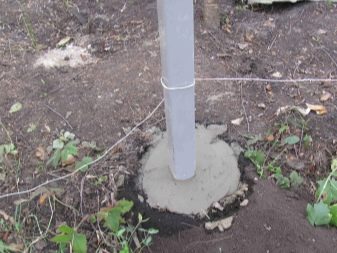
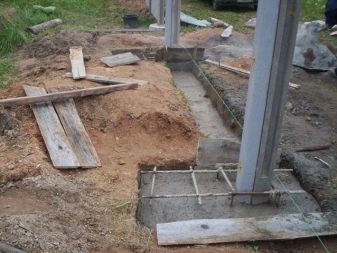
- Installation of jumpers... They are simply welded to the posts. If you do not know how to work with such a tool, then you can screw the elements using self-tapping screws for metal. But the latter method is not particularly effective, since it is difficult to obtain a solid structure of high strength. Please note that the number of jumpers should be selected depending on the height of the fence. If this parameter exceeds 1.5 m, then 3 horizontal binders should be used. Otherwise, 2 elements are enough.
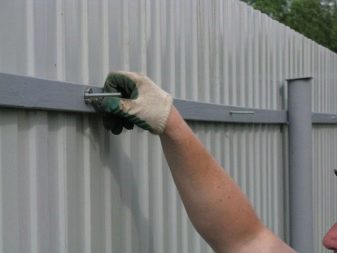
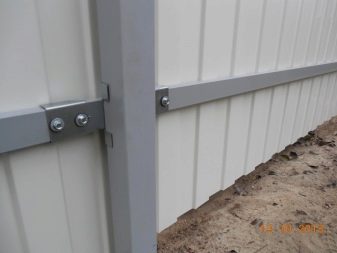
- Installation of decorative coating... The fastening technology depends on the material used for the cladding. For example, a metal profile is simply screwed on with special self-tapping screws with a sealing rubber on the head.
To protect the metal from corrosion, it is advisable to cover it with several layers of protective paints.
Here they use both primers and compositions that are intended for external climatic conditions.


Successful examples and options
The correct selection of pipes for the fence will make this fence not only reliable, but also beautiful.
Although it was mentioned in the article that fences are not made of plastic pipes, however, someone managed to make a rather attractive fence from this material.Of course, it will not save you from large animals and intruders, but it will demonstrate the skillful hands and creativity of the owner and allow you to determine the beginning of private ownership.
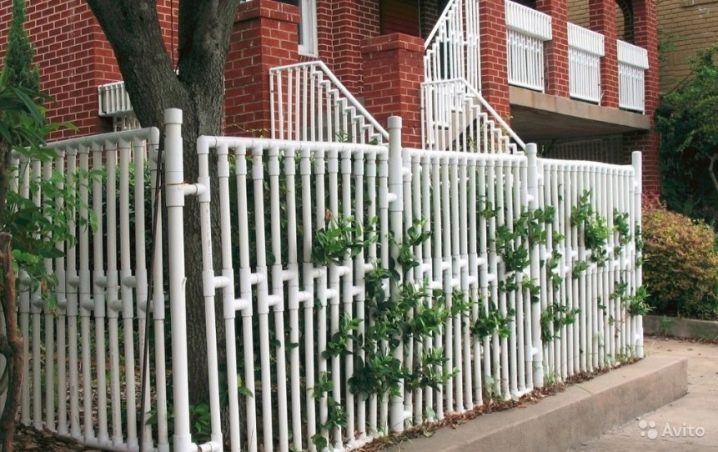
The metal pipes for this welded fence are matched to its exact style.
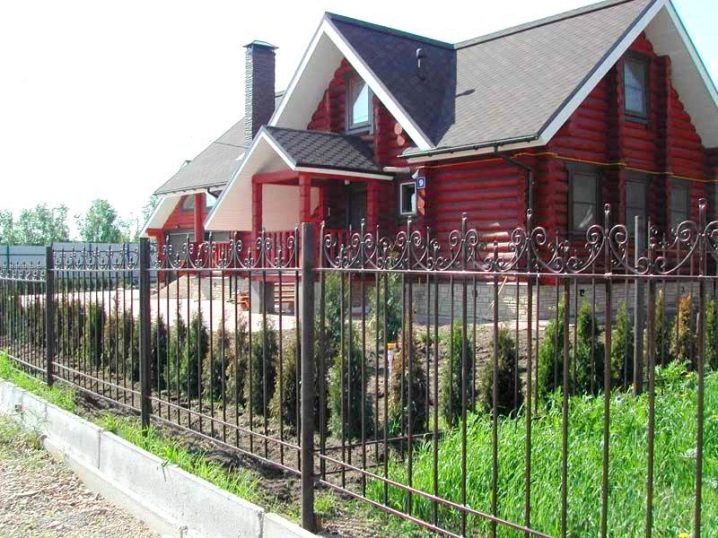
And in this case, the asbestos pipes were painted with red paint, and metal caps of the same color were put on top. The latter are matched to metal lining on a wooden picket fence, from which the fence itself was built. In the end, everything turned out pretty decent and interesting.
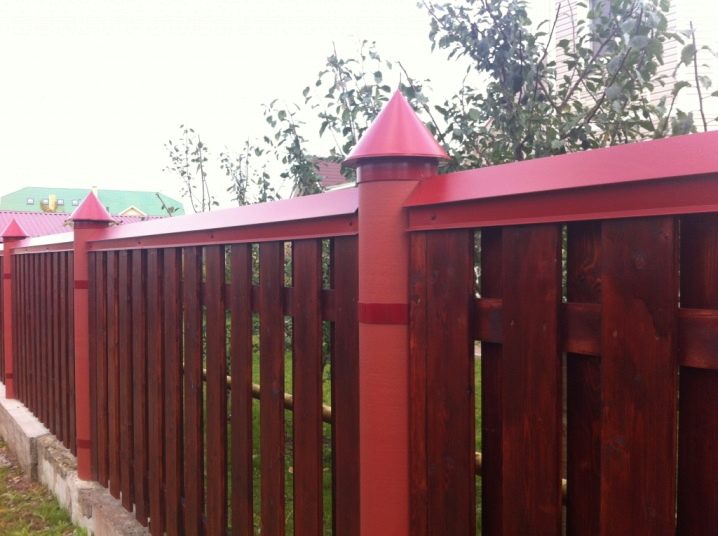
For information on how to install a fence post, see the next video.



































































The comment was sent successfully.